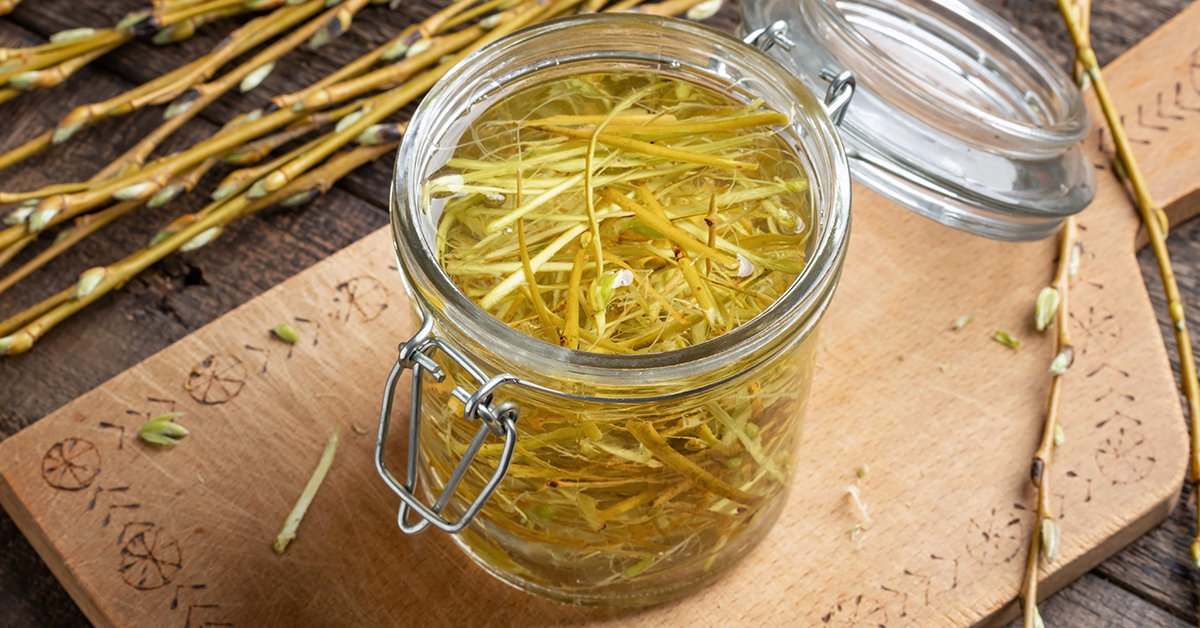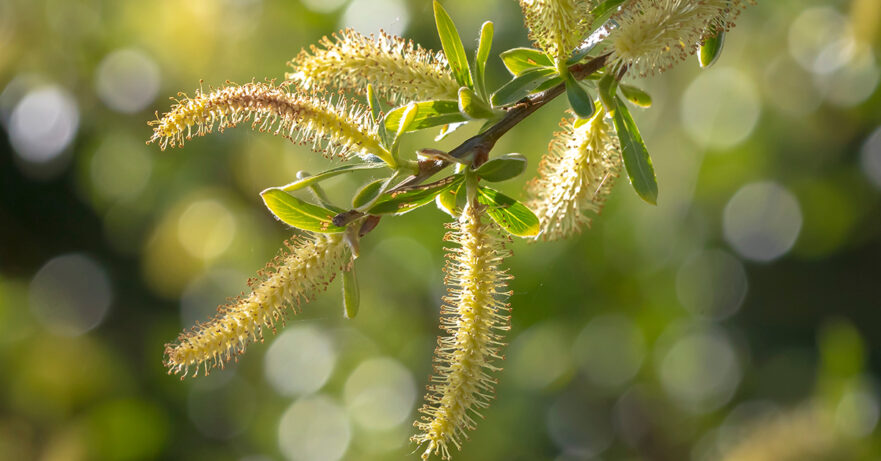In this monograph about white willow:
📖 Introduction | 🌱 Botanical Description | 📜 Traditional Uses | 🔍 Phytochemistry | ✨ Applications and Uses | 🛡️ Safety Profile
📖 Introduction
White willow (Salix alba) is a deciduous tree celebrated in herbal medicine for its analgesic and anti-inflammatory properties. The bark of the white willow tree has been used for centuries, dating back to ancient civilizations, to ease pain and reduce fever, marking its significance in the development of modern aspirin.
| English Name | White Willow |
| Latin Name | Salix alba |
| Parts Used | Bark |
| Traditional Uses | Pain relief, reducing fever, anti-inflammatory |
| Herbal Actions | Analgesic, anti-inflammatory, antipyretic |
🌱 Botanical Description
Scientific Classification
Salix alba belongs to the Salicaceae family.
Physical Characteristics
It is a medium to large tree with rough, grayish bark, slender branches, and elongated, lance-shaped leaves. The tree is known for its catkins—fluffy, white flower clusters.
Natural Habitat and Cultivation Details
Native to Europe and western Asia, white willow thrives along streams and in moist soils. It is now found in various temperate regions worldwide.
📜 Traditional Uses
Traditionally, white willow bark has been utilized to relieve headaches, muscle pain, and menstrual cramps and as a natural remedy for fever. Its role in historical medicine paved the way for the synthesis of salicylic acid, the precursor to aspirin.

🔍 Phytochemistry (Active Constituents)
The medicinal benefits of white willow are primarily attributed to its rich content of:
- Salicin: This glycoside, upon ingestion, is metabolized into salicylic acid, known for its pain-relieving and anti-inflammatory effects.
- Tannins: They provide astringent properties that contribute to the herb’s overall therapeutic effects.
- Flavonoids and phenolic acids: These compounds offer antioxidant benefits, supporting the body’s response to inflammation.
✨ Applications and Uses
In herbal medicine, white willow bark is used for:
- Pain relief: Effective in managing low back pain, headaches, and osteoarthritis pain.
- Anti-inflammatory: Used to reduce inflammation associated with various conditions, such as arthritis and tendonitis.
- Fever reduction: Employed to reduce fever and relieve cold and flu symptoms.
The efficacy of Salix alba in these applications is supported by its salicin content, mirroring the action of aspirin yet offering a gentler alternative with fewer side effects.
🛡️ Safety Profile
White willow bark is generally considered safe for most adults when used in moderation.
However, similar to aspirin, its use should be approached with caution in individuals with gastrointestinal ulcers or bleeding disorders due to its potential to irritate the stomach lining.
Usage in children with febrile illnesses is not recommended due to the risk of Reye’s syndrome.
Pregnant and breastfeeding women are recommended to consult a healthcare provider before use.
The use of white willow bark by individuals on anticoagulant therapy should be under medical supervision to avoid potential interactions.
A consultation with a healthcare professional before starting any new herbal treatment is advisable, especially for those with pre-existing conditions or those taking other medications.
